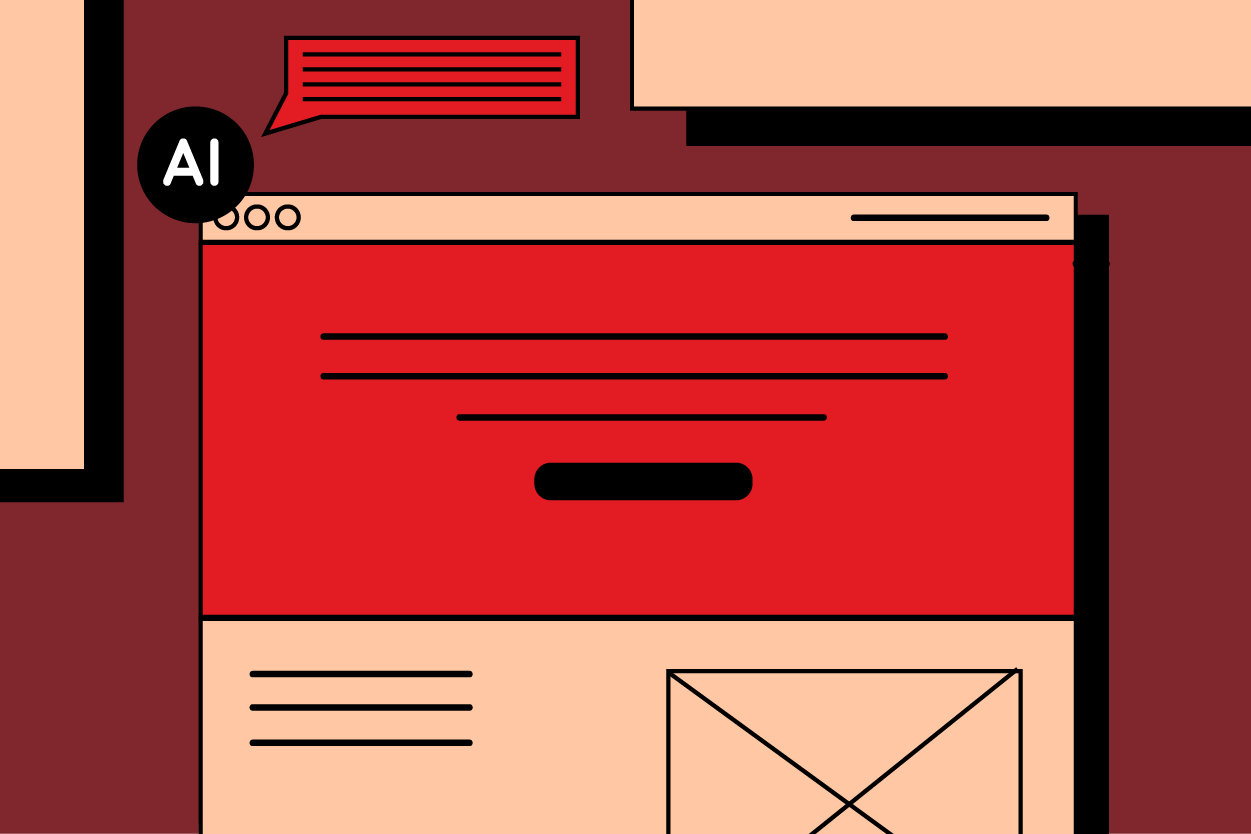Artificial intelligence is changing the way designers, marketers, and brands view website content and design. With advanced artificial intelligence technology, tasks are automated, and real-time updates are made.
In this article, we will discuss the role of AI in dynamic web design and how it helps web designers develop and update web design efficiently and effectively.
How AI Is Influencing Web Design
AI's most significant role in website design is allowing designers to create user-friendly websites quickly. Compared to manually creating codes, the time reduction with automated AI is impressive. Here are several other ways AI is influencing web design:
- Automated site and content optimization
AI automatically analyzes the user experience and suggests improvements for more excellent optimization. SEO still counts, and its automation through AI is helping web designers reach optimized sites sooner.
- Detecting broken links
Updates are made more efficiently by automating the task of finding broken links and other errors.
- Speeding up your website
AI can improves website speed by automatically resizing images and addressing code issues.
AI Tools for User-Friendly Layouts
The high demand for AI for user-friendly web design has resulted in more choices when it comes to selecting your software. Let’s look at four of the top AI tools for user-friendly layouts:
Uizard
Uizard is an AI software that is easy to use and can have a website up and running in minutes. One of the most significant benefits is that the software allows designers (this includes both professionals and novices) to work with a real team in real-time during the design process.
Khroma
Khroma AI software steps in to ensure your website color palette is perfect. Once your color palette is set, Khroma blocks the colors you don’t want while automatically slotting in the ones that fit your color scheme.
Designs.AI
Designs.AI is one of the best tools to begin with if you are new to AI and web design. It's an Agency-as-a-Service platform that uses AI technology to allow users to create, edit, and scale content. It’s simple to use and lets you get a website up and running quickly.
Midjourney
Using a chatbot, Midjourney creates images through the use of text. You tell it what you want, and then it comes up with a design. It’s a great way to see your vision come to life and do some brainstorming.
Though these top four are some of the most popular, there's lots to choose from, and it's important to do your research first before settling on which software would work best for you.
AI-Driven A/B Testing
A/B testing is sometimes called split testing and is a test to compare two versions of something like a headline, button or entire website front-end to see which one gets better results from viewers and consumers. Let’s look at a few things that AI-driven A/B testing can detect:
- User analyses help designers know how to target different population segments. A variant in the A/B test that works well in one region may not work well for another.
- A/B testing allows you to see how well different colors perform, such as a call-to-action button.
- User experience: was the site friendly and easy to navigate?
- The bounce rate: how long does a user stay on your site?
- Which minor changes need to be made the site.
Automated Web Content Adaptation
They say content is king, and a website needs plenty if that’s the case. The task is daunting when content is needed daily and sometimes several times a day. With AI-driven content adaptation, content is automated, scheduled and appears — all without the help of a human.
So, how does AI automatically know what to share? Through semantic analysis, which focuses on user intent, the software detects what the user will want to read next. Here are four popular platforms for content automation:
Quark
With Quark, you can automate the entire life cycle of your content. It includes the creation, publishing, and management of each piece.
Divvy HQ
Divvy HQ is a platform that automates content development, strategies, planning, and collaboration.
GPT-3
GPT-3 can generate all kinds of content, including text and images. With just a few suggestions, GPT-3 can write an essay, emails, blog posts, or whatever you need, saving hours of your time.
Content Bot
Content Bot is a platform for content automation and specializes in landing pages, blog posts, e-commerce content, marketing copy, and automated content using an AI content generator.
Personalized User Experience
Personalized user experience is mentioned often, especially when discussing the role of AI in dynamic website design. It’s vital to understand what it means in order to understand how AI plays a role in the user experience. Let’s first define personal user experience.
User experience (UX) refers to a user's entire experience when visiting a website. If a website is fast and easy to navigate, you’ll likely stay on the site longer and eventually return. If it’s slow, confusing, and not enjoyable, you’ll search for a new one. Variables include page loading speeds, how easy a website is to navigate, whether services are easy to understand and use, if a website layout is clear and if a site looks the same on desktop and mobile.
How AI Improves UX Design
With the help of AI, the UX is improving for many websites, and the improvements are now more accessible for web designers.
AI tools can access and process data from sites quicker than humans. With automated data analysis and results from AI, designers can implement changes sooner than they could in the past, which leads to a better user experience.
Data is critical in understanding how long visitors stay on a page, how many conversions are seen, and whether or not visitors return. Personalizing the UX is essential for a positive UX experience. AI takes the data it receives and uses it to understand more about the user. Where do they live? What sites do they visit often? The personalization of the user experience creates a connection and positive emotions with the user.
Accessibility standards for websites, such as readability and disability friendly, are also better monitored, analyzed, and repaired when AI finds the issues and reports them to the web designer.
Staying Relevant
Websites must stay relevant for optimal user experiences. One way AI helps with relevancy is by using algorithms to predict trends. Web designers can then use the trends predictions in their designs.
As AI advances, so will web design. Improvements include faster page speeds, relevant content, a focus on user intent, and changing a website's interface based on your consumers. The role of AI in dynamic web design is truly one of improving the user experience, making the web designer’s job easier, and creating websites that are noticed by search engines’ algorithms.


